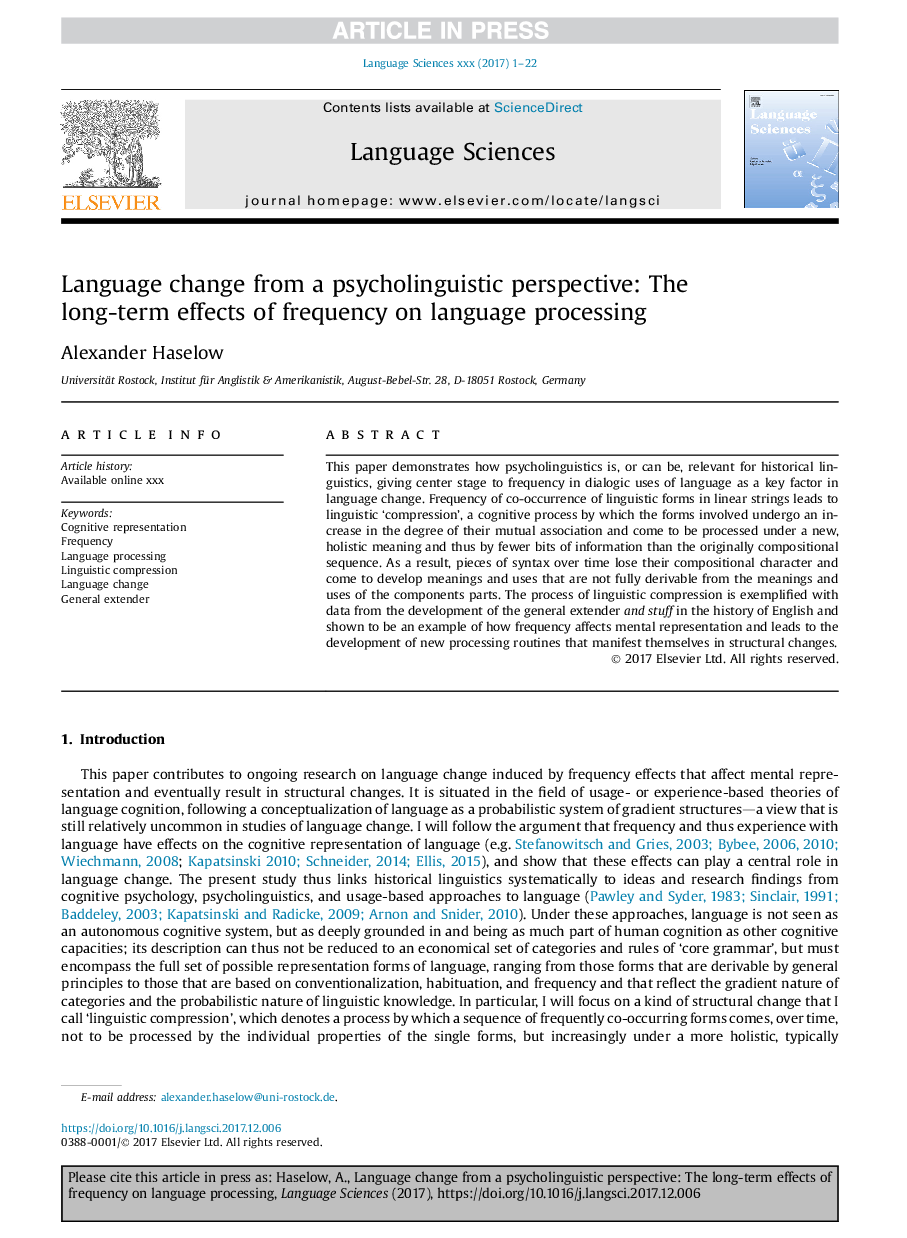| Article ID | Journal | Published Year | Pages | File Type |
|---|---|---|---|---|
| 7533797 | Language Sciences | 2018 | 22 Pages |
Abstract
This paper demonstrates how psycholinguistics is, or can be, relevant for historical linguistics, giving center stage to frequency in dialogic uses of language as a key factor in language change. Frequency of co-occurrence of linguistic forms in linear strings leads to linguistic 'compression', a cognitive process by which the forms involved undergo an increase in the degree of their mutual association and come to be processed under a new, holistic meaning and thus by fewer bits of information than the originally compositional sequence. As a result, pieces of syntax over time lose their compositional character and come to develop meanings and uses that are not fully derivable from the meanings and uses of the components parts. The process of linguistic compression is exemplified with data from the development of the general extender and stuff in the history of English and shown to be an example of how frequency affects mental representation and leads to the development of new processing routines that manifest themselves in structural changes.
Related Topics
Social Sciences and Humanities
Arts and Humanities
Language and Linguistics
Authors
Alexander Haselow,
